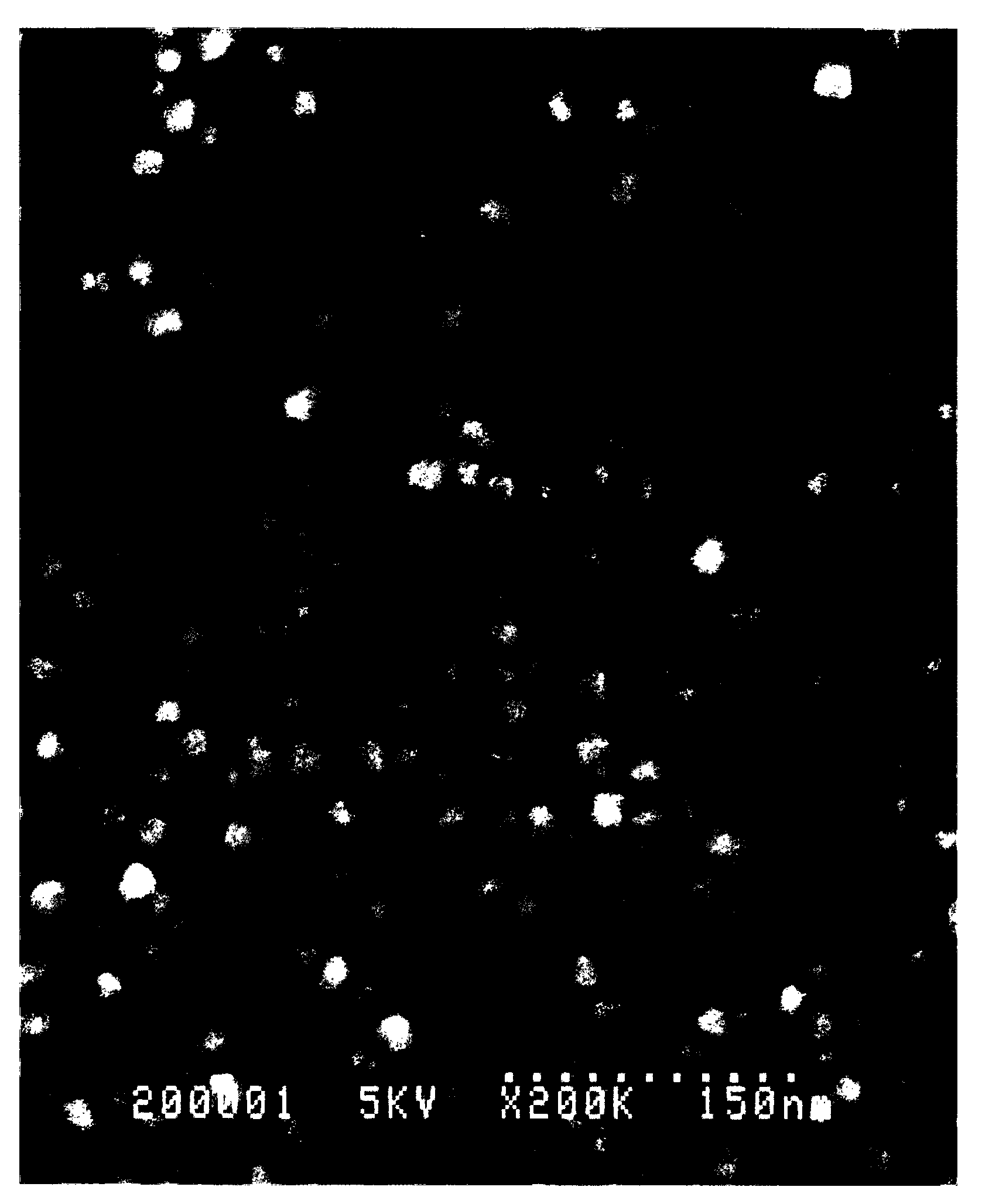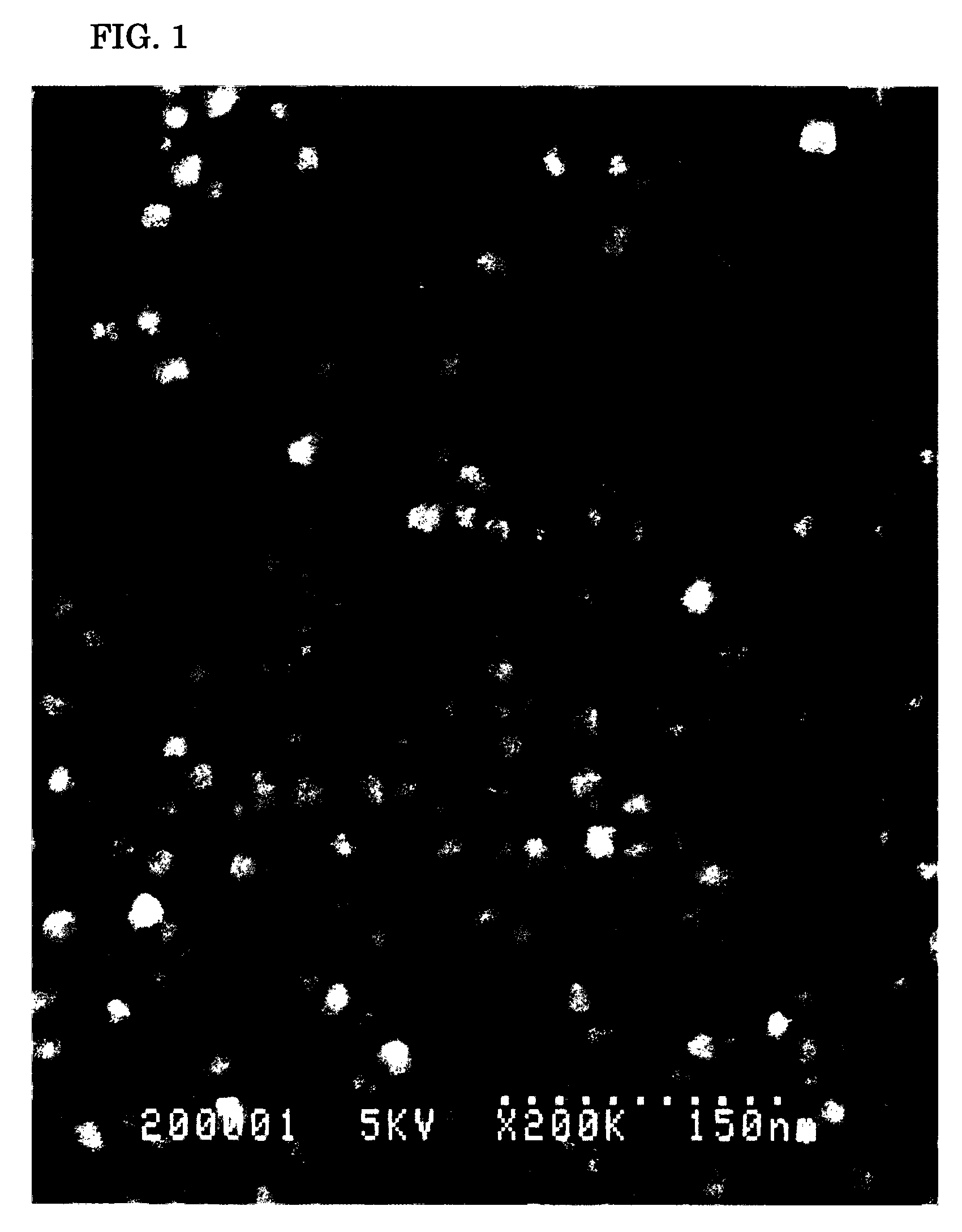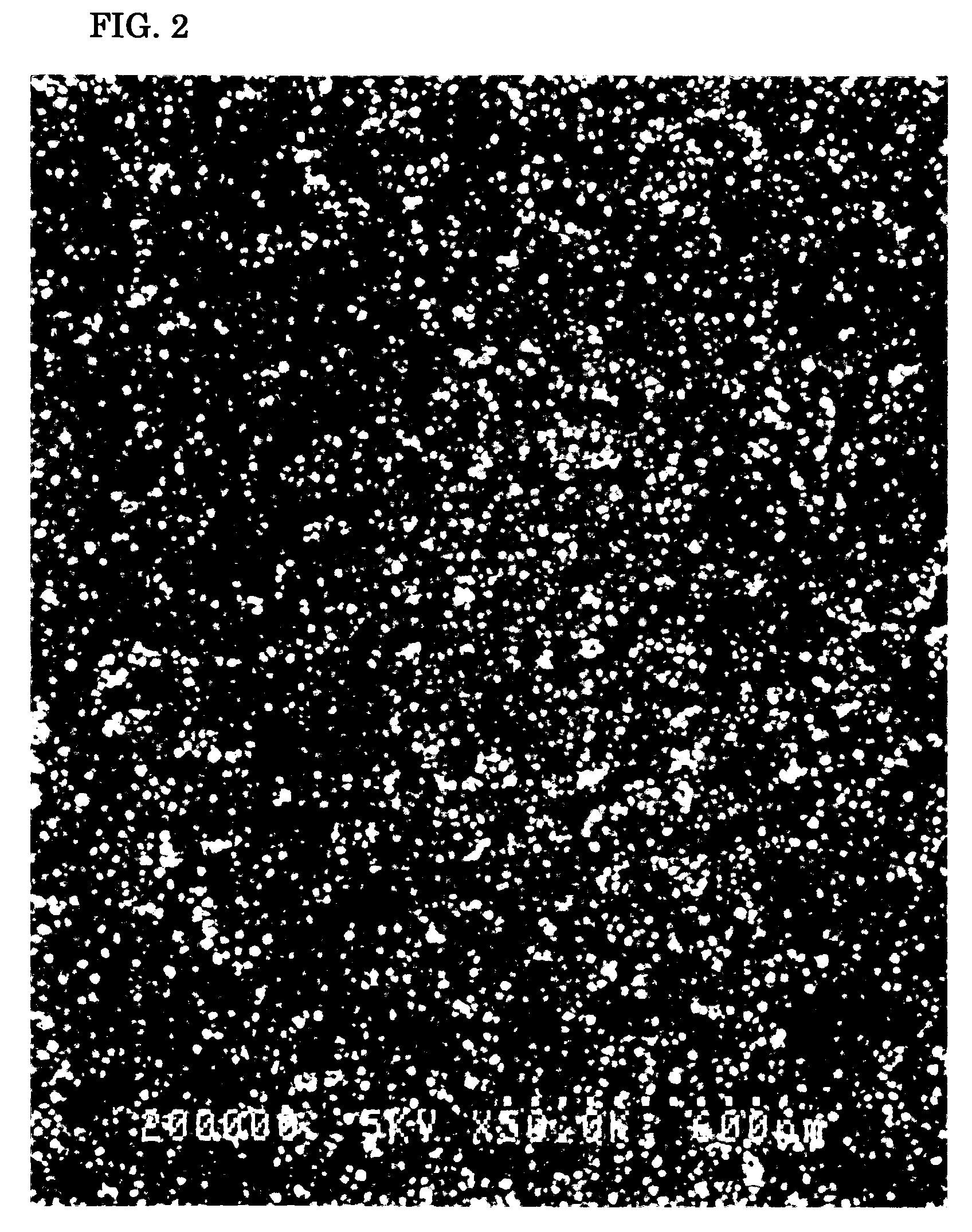Metallic colloidal solution and inkjet-use metallic ink
a colloidal solution and metallic ink technology, applied in the direction of oxide conductors, conductors, non-metal conductors, etc., can solve the problems of limited solubility of metallic compounds and reducing agents having good solubility in specific organic solvents, limited solution properties such as viscosity, surface tension, and vapor pressure (a boiling point), and achieve uniform particle diameter , good solubility, excellent conductivity
- Summary
- Abstract
- Description
- Claims
- Application Information
AI Technical Summary
Benefits of technology
Problems solved by technology
Method used
Image
Examples
example 1
[0080]A silver nitrate-ammonia solution was prepared by, first, dissolving 24 grams of silver nitrate in 150 grams of pure water and, then, adding ammonia water to the liquid to adjust its pH to 11.0. Next, 12 grams of polyvinyl pyrrolidone (molecular weight: 30,000) as the dispersant was added to the silver nitrate-ammonia solution and dissolved in it. Then, 100 grams of ethylene glycol as the reducing agent was added to the solution. The solution was stirred at a stirring rate of 1,000 rpm for 180 minutes at 40° C. to cause the chemical reaction to proceed. Thus, a water-based silver colloidal solution having a yellow plasmon absorption was obtained.
[0081]Next, the obtained silver colloidal solution was centrifuged at 20,000 G for 20 minutes to remove impurities lighter than the silver particles. This removing operation was repeated. The solution was rinsed with pure water. The particle size distribution of the silver particles was measured using a particle size analyzer that appl...
example 2
[0085]A water-based silver colloidal solution was obtained through a method similar to that used in Example 1 except that 12 grams of polyvinyl pyrrolidone having a molecular weight of 25,000 was used as the dispersant.
[0086]The obtained silver colloidal solution was centrifuged at 20,000 G for 20 minutes to remove impurities lighter than the silver particles. This removing operation was repeated. The solution was rinsed with pure water. The particle size distribution of the silver particles was measured using the above-described particle size analyzer. The result revealed that there was a sharp peak at a position of 12 nm.
[0087]Next, the obtained silver colloidal solution was concentrated with a rotary evaporator to reduce the water content to 20 wt. %. Glycerin as the water-soluble organic solvent was added to the solution. Thus, a silver colloidal solution whose dispersion medium was a mixed solution of water and glycerin was produced.
[0088]In the silver colloidal solution, the c...
example 3
[0089]A water-based silver colloidal solution was obtained through a method similar to that used in Example 1 except that the amount of the silver nitrate was changed to 48 grams, the amount of the polyvinyl pyrrolidone (molecular weight: 30,000) as the dispersant was changed to 24 grams, and 50 grams of citric acid was used as the reducing agent.
[0090]The obtained silver colloidal solution was centrifuged at 20,000 G for 20 minutes to remove impurities lighter than the silver particles. This removing operation was repeated. The solution was rinsed with pure water. The particle size distribution of the silver particles was measured using the above-described particle size analyzer. The result revealed that there was a sharp peak at a position of 22 nm.
[0091]Next, the obtained silver colloidal solution was concentrated by heating it at 60° C. to reduce the water content to 1 wt. %. Ethanol as the water-soluble organic solvent was added to the solution. Thus, a silver colloidal solutio...
PUM
| Property | Measurement | Unit |
|---|---|---|
| primary-particle diameter | aaaaa | aaaaa |
| viscosity | aaaaa | aaaaa |
| surface tension | aaaaa | aaaaa |
Abstract
Description
Claims
Application Information
 Login to View More
Login to View More - R&D
- Intellectual Property
- Life Sciences
- Materials
- Tech Scout
- Unparalleled Data Quality
- Higher Quality Content
- 60% Fewer Hallucinations
Browse by: Latest US Patents, China's latest patents, Technical Efficacy Thesaurus, Application Domain, Technology Topic, Popular Technical Reports.
© 2025 PatSnap. All rights reserved.Legal|Privacy policy|Modern Slavery Act Transparency Statement|Sitemap|About US| Contact US: help@patsnap.com



